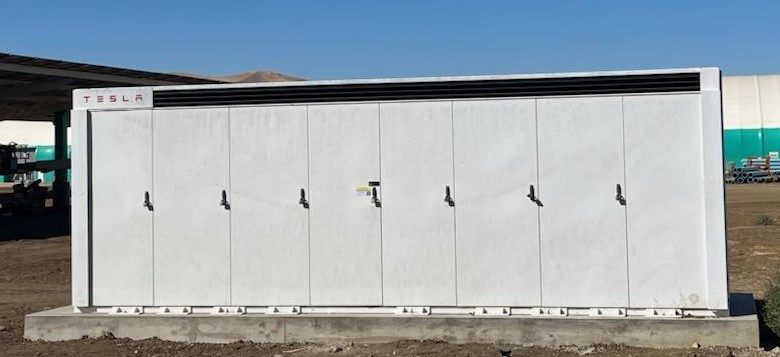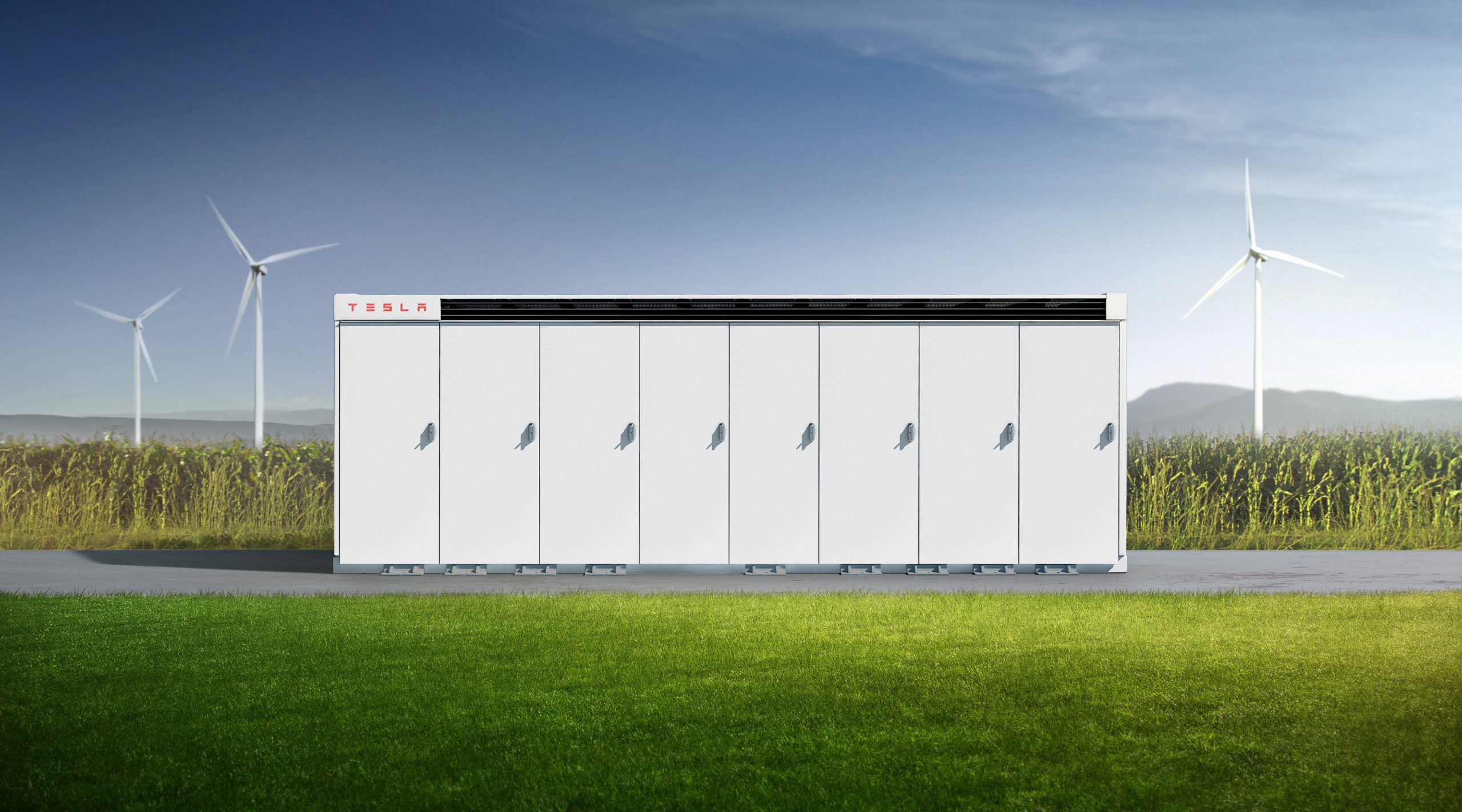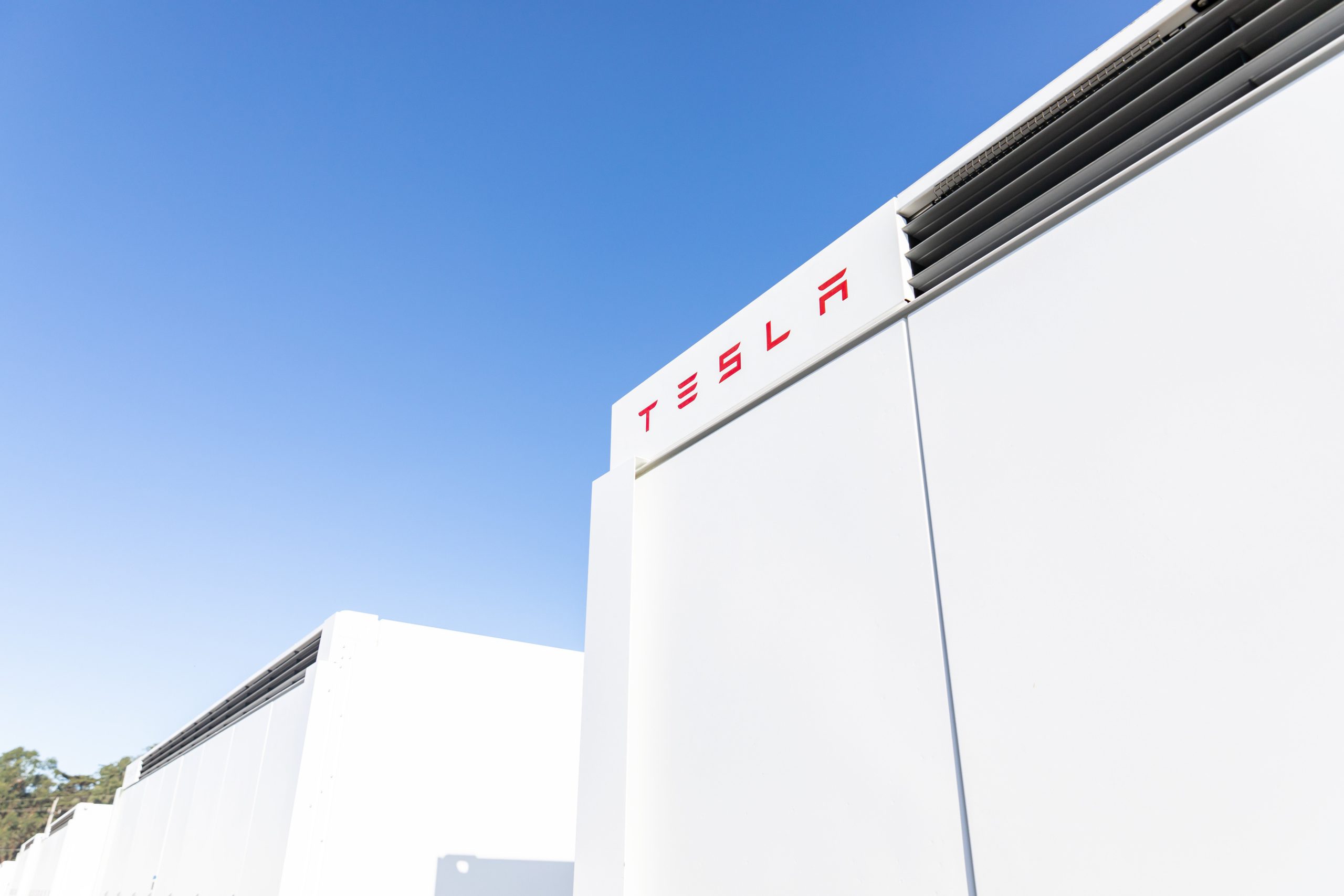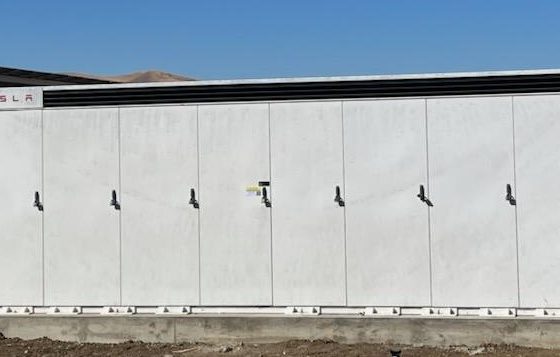A Tesla Megapack is powering a large housing factory completely off-grid in Patterson, California, with energy from a large array of on-site, PVGraf solar panels. The factory isn’t connected to the local power grid, and this is the first time a Tesla Megapack has been deployed and running completely off-grid. The system has been operating without any issues since November.

S2A Modular, a tech company that manufactures modular homes, tiny houses, and more that run on direct-current (DC) power, owns the Tesla Megapack, and its president and cofounder, John Rowland, granted Teslarati an exclusive interview. The company is also in the business of addressing housing for the homeless as well as making luxury homes and single-family homes.
John Rowland, S2A Modular’s president, and cofounder, granted Teslarati an exclusive interview. He shared with Teslarati that the company has 35 facilities, with five currently under construction and Tesla Megapacks on order. The first one in Patterson, California, is completely off the grid, and John has been working with Tesla to monitor its progress.
The delivery and installation of the Tesla Megapack, John explained, was “very smooth.” All of the infrastructure was in place, and it only took a couple of days to install the battery.
John told Teslarati that the reason why he went with Tesla is that he is a huge fan of both Tesla and Elon Musk. Initially, he had planned to buy the Tesla PowerPacks but by the time the factory came to fruition, Tesla Megapacks were available. As a homebuilder, he wanted to build homes that run on batteries. John said that engineered and built the second off-grid Tesla-powered home in North America.
“When I built that home, I decided I wanted to scale and build homes that were meant to run on batteries because this is how that house was engineered and built. It was the lowest voltage, lowest amperage home on the planet.”

John realized that in order to scale, he would need a factory and wanted to take the same approach that he has taken to engineering and building the homes and “engineer and build a factory that was made to run off-grid.
The hundred thousand-square-foot factory has no gas, or propane, only graphene solar panels, and a Tesla Megapack. “And no connection to the electrical grid.”
John pointed out that he has had a good relationship with Tesla since 2015, and once the Megapacks were available, he ordered one for each of the facilities.
“We’ve got the first one in Patterson, California, and it’s been up and running a little over a month now. And it’s running like a champ. The whole factory’s powered off-grid, and it’s a huge success, so we’re looking to carry it over to our next facilities.”
John and his team and Tesla are monitoring the battery three times a day since it is completely off-grid. At first, there was a little hesitation on Tesla’s part for installing a completely off-grid Megapack, but John was able to win them over, and things are going smoothly.
“This is the first time that a Megapack was programmed to run off-grid. They’re set to take a trickle charge from the grid 24/7, and it took some convincing to get Tesla to allow us to do it this way. At first, they said, ‘you’re a couple of years ahead of us,’ but they finally agreed to allow us to do it, and now they’re using it as beta. They’re monitoring it just like we are.”
“One of Tesla’s head engineers that we work with told us that when we powered it up, it would take four days for our solar to charge the battery fully. We did it in seven and a half hours.”

John explained that the solar panels his company uses are made with specially manufactured graphene solar panels. “They’re the only company in the world using graphene, and they have 20 worldwide patents on it. At S2A, we paid and file our own UL( Underwriter Labs) to have our own UL-rated panel produced.”
When asked about feedback, John explained that he talks to Tesla’s engineers regularly and provides updates on the battery’s performance.
“It’s quite to our surprise It’s a 1.4-megawatt battery, and we’re able to keep it about 90% even with all of our equipment running. It’s really working better than our expectations.”
One thing John wasn’t expecting was the surplus of energy. He actually plans to connect the Megapack to the grid next year so that he can discharge the excess power and help take some of the burdens away from the local grid.
“Our inverters are shutting off every day because we’re producing more power than we can use. Our factory is actually net-positive, and we will start contributing back to the grid next year.”
“We’ve got the battery set right now–when it reaches 97% capacity, the inverter shuts down and stops producing power. We’ve been monitoring it three times a day, and it’s been shutting off every day. Even with the factory running at full speed, we still produce excess energy.”
John added that he also purchased the Tesla Semi and plans to use them to deliver homes to customers.
Disclosure: Johnna is a $TSLA shareholder and believes in Tesla’s mission.
Your feedback is welcome. If you have any comments or concerns or see a typo, you can email me at johnna@teslarati.com. You can also reach me on Twitter at @JohnnaCrider1.
Teslarati is now on TikTok. Follow us for interactive news & more. Teslarati is now on TikTok. Follow us for interactive news & more. You can also follow Teslarati on LinkedIn, Twitter, Instagram, and Facebook.

News
Tesla FSD V14.2.1 is earning rave reviews from users in diverse conditions
Tesla’s Full Self-Driving (Supervised) software continues its rapid evolution, with the latest V14.2.1 update drawing widespread praise.

Tesla’s Full Self-Driving (Supervised) software continues its rapid evolution, with the latest V14.2.1 update drawing widespread praise for its smoother performance and smarter decision-making.
Videos and firsthand accounts from Tesla owners highlight V14.2.1 as an update that improves navigation responsiveness, sign recognition, and overall fluidity, among other things. Some drivers have even described it as “more alive than ever,” hinting at the system eventually feeling “sentient,” as Elon Musk has predicted.
FSD V14.2.1 first impressions
Early adopters are buzzing about how V14.2.1 feels less intrusive while staying vigilant. In a post shared on X, Tesla owner @LactoseLunatic described the update as a “huge leap forward,” adding that the system remains “incredibly assertive but still safe.”
Another Tesla driver, Devin Olsenn, who logged ~600 km on V14.2.1, reported no safety disengagements, with the car feeling “more alive than ever.” The Tesla owner noted that his wife now defaults to using FSD V14, as the system is already very smooth and refined.
Adverse weather and regulatory zones are testing grounds where V14.2.1 shines, at least according to testers in snow areas. Tesla watcher Sawyer Merritt shared a video of his first snowy drive on unplowed rural roads in New Hampshire, where FSD did great and erred on the side of caution. As per Merritt, FSD V14.2.1 was “extra cautious” but it performed well overall.
Sign recognition and freeway prowess
Sign recognition also seemed to show improvements with FSD V14.2.1. Longtime FSD tester Chuck Cook highlighted a clip from his upcoming first-impressions video, showcasing improved school zone behavior. “I think it read the signs better,” he observed, though in standard mode, it didn’t fully drop to 15 mph within the short timeframe. This nuance points to V14.2.1’s growing awareness of temporal rules, a step toward fewer false positives in dynamic environments.
FSD V14.2.1 also seems to excel in high-stress highway scenarios. Fellow FSD tester @BLKMDL3 posted a video of FSD V14.2.1 managing a multi-lane freeway closure due to a police chase-related accident. “Perfectly handles all lanes of the freeway merging into one,” the Tesla owner noted in his post on X.
FSD V14.2.1 was released on Thanksgiving, much to the pleasant surprise of Tesla owners. The update’s release notes are almost identical to the system’s previous iteration, save for one line item read, “Camera visibility can lead to increased attention monitoring sensitivity.”
News
Tesla FSD Supervised ride-alongs in Europe begin in Italy, France, and Germany
The program allows the public to hop in as a non-driving observer to witness FSD navigate urban streets firsthand.

Tesla has kicked off passenger ride-alongs for Full Self-Driving (Supervised) in Italy, France and Germany. The program allows the public to hop in as a non-driving observer to witness FSD navigate urban streets firsthand.
The program, detailed on Tesla’s event pages, arrives ahead of a potential early 2026 Dutch regulatory approval that could unlock a potential EU-wide rollout for FSD.
Hands-Off Demos
Tesla’s ride-along invites participants to “ride along in the passenger seat to experience how it handles real-world traffic & the most stressful parts of daily driving, making the roads safer for all,” as per the company’s announcement on X through its official Tesla Europe & Middle East account.
Sign-ups via localized pages offer free slots through December, with Tesla teams piloting vehicles through city streets, roundabouts and highways.
“Be one of the first to experience Full Self-Driving (Supervised) from the passenger seat. Our team will take you along as a passenger and show you how Full Self-Driving (Supervised) works under real-world road conditions,” Tesla wrote. “Discover how it reacts to live traffic and masters the most stressful parts of driving to make the roads safer for you and others. Come join us to learn how we are moving closer to a fully autonomous future.”
Building trust towards an FSD Unsupervised rollout
Tesla’s FSD (Supervised) ride-alongs could be an effective tool to build trust and get regular car buyers and commuters used to the idea of vehicles driving themselves. By seating riders shotgun, Tesla could provide participants with a front row seat to the bleeding edge of consumer-grade driverless systems.
FSD (Supervised) has already been rolled out to several countries, such as the United States, Canada, Australia, New Zealand, and partially in China. So far, FSD (Supervised) has been received positively by drivers, as it really makes driving tasks and long trips significantly easier and more pleasant.
FSD is a key safety feature as well, which became all too evident when a Tesla driving on FSD was hit by what seemed to be a meteorite in Australia. The vehicle moved safely despite the impact, though the same would likely not be true had the car been driven manually.
News
Swedish union rep pissed that Tesla is working around a postal blockade they started
Tesla Sweden is now using dozens of private residences as a way to obtain license plates for its vehicles.

Two years into their postal blockade, Swedish unions are outraged that Tesla is still able to provide its customers’ vehicles with valid plates through various clever workarounds.
Seko chairman Gabriella Lavecchia called it “embarrassing” that the world’s largest EV maker, owned by CEO Elon Musk, refuses to simply roll over and accept the unions’ demands.
Unions shocked Tesla won’t just roll over and surrender
The postal unions’ blockade began in November 2023 when Seko and IF Metall-linked unions stopped all mail to Tesla sites to force a collective agreement. License plates for Tesla vehicles instantly became the perfect pressure point, as noted in a Dagens Arbete report.
Tesla responded by implementing initiatives to work around the blockades. A recent investigation from Arbetet revealed that Tesla Sweden is now using dozens of private residences, including one employee’s parents’ house in Trångsund and a customer-relations staffer’s home in Vårby, as a way to obtain license plates for its vehicles.
Seko chairman Gabriella Lavecchia is not pleased that Tesla Sweden is working around the unions’ efforts yet again. “It is embarrassing that one of the world’s largest car companies, owned by one of the world’s richest people, has sunk this low,” she told the outlet. “Unfortunately, it is completely frivolous that such a large company conducts business in this way.”
Two years on and plates are still being received
The Swedish Transport Agency has confirmed Tesla is still using several different workarounds to overcome the unions’ blockades.
As noted by DA, Tesla Sweden previously used different addresses to receive its license plates. At one point, the electric vehicle maker used addresses for car care shops. Tesla Sweden reportedly used this strategy in Östermalm in Stockholm, as well as in Norrköping and Gothenburg.
Another strategy that Tesla Sweden reportedly implemented involved replacement plates being ordered by private individuals when vehicles change hands from Tesla to car buyers. There have also been cases where the police have reportedly issued temporary plates to Tesla vehicles.










